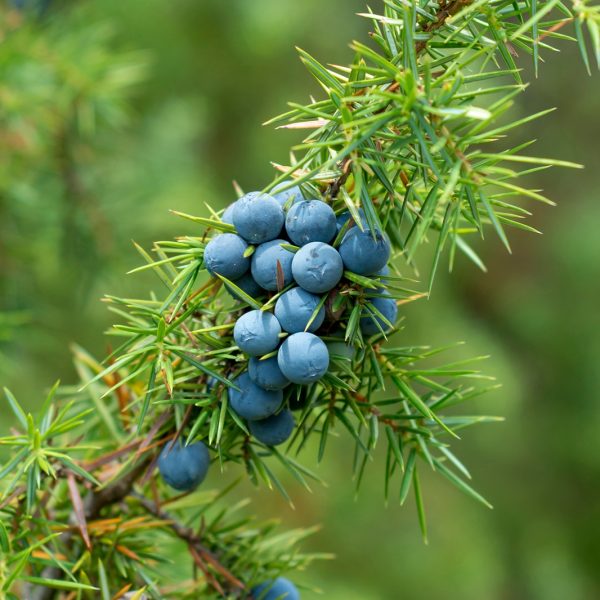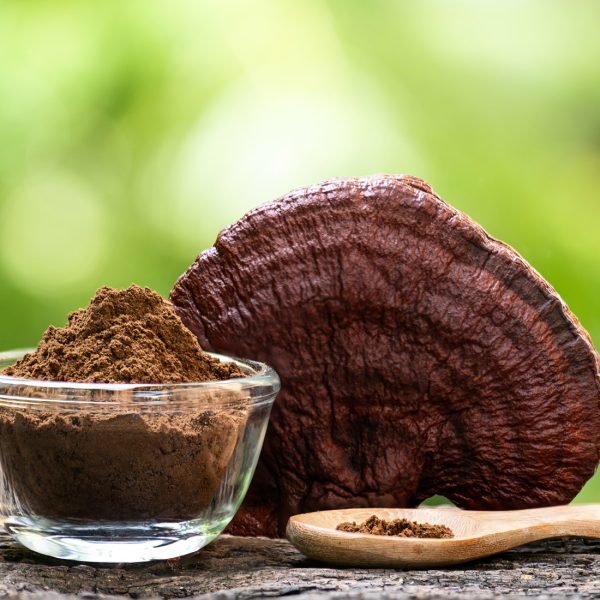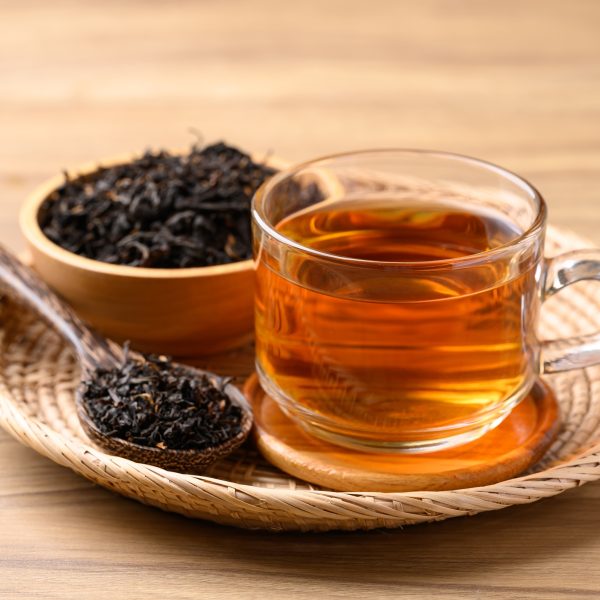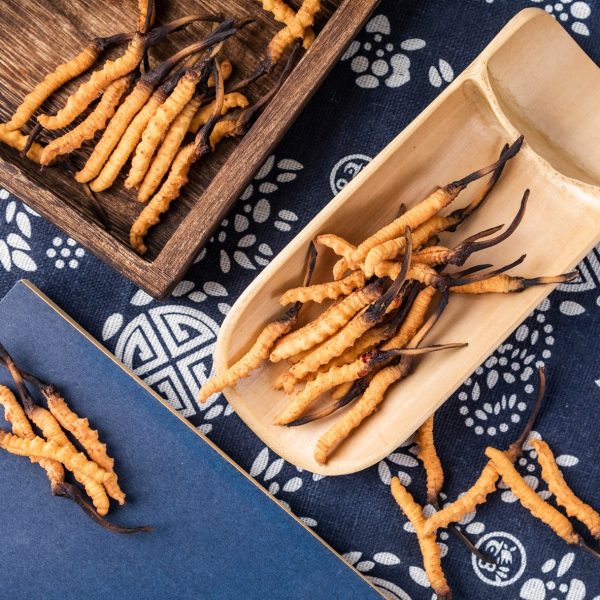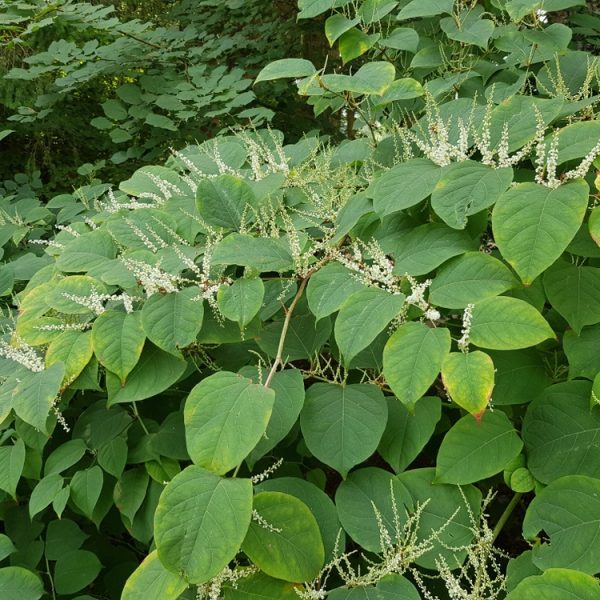-
How does it feel?
-
What can I use it for?

Japanese knotweed bush (Reynoutria japonica) In traditional Chinese medicine (TCM), Japanese knotweed is used for clearing heat and toxicity in the body, improving blood quality and qi circulation (4). These combined actions mean that it deeply nourishes and supports systemic health. It is believed to increase longevity and is taken as an anti-aging agent. This is unsurprising considering its broad range of health benefits, such as its cardiovascular tonic and antioxidant properties (4).
It is sometimes used for viral respiratory tract infections as it clears phlegm and relieves coughs (3). As a tincture it may be taken to help bolster the defences and reduce stagnation and congestion associated with the common cold and other respiratory infections (3).
Japanese knotweed is widely used as a food in Asia. When foraging for Japanese knotweed in non-native countries, one must consider the risk of contamination with chemicals such as herbicides. As it is considered a highly invasive species, it is often subject to treatment with highly toxic pesticides. See ‘Quality control’ for more guidance on sourcing safe and effective medicinal plants.
Japanese knotweed is packed with valuable nutrients such as vitamin A, vitamin C and an important antioxidant and cardio-protective flavonoid called rutin. It also contains important minerals including zinc, potassium, phosphorus, and manganese (8). This nutritive quality of Japanese knotweed makes it particularly nourishing as a food and an excellent tonic for blood health.
-
Into the heart of japanese knotweed

Fresh Japanese knotweed plant (Reynoutria japonica) Japanese knotweed is a nutritive blood tonic due to the content of its flavonoids, minerals and vitamins. It also has a nourishing and antioxidant effect on the vascular tissues and is used to reduce irritation and inflammation (4, 5, 7). It may be well applied in conditions that present with alternating constriction and relaxation due to its ability to support the structural health of the micro-circulation whilst neutralising tension and relaxing the capillaries (7).
As a circulatory tonic, it is indicated in peripheral stagnation as it facilitates a healthy balance of tone in the micro-circulation therefore improving blood flow to the tissues. It also allows better flow of blood to the extremities and, therefore, also helps to reduce stagnation and congestion (9).
Known as hu zhang (tiger’s cane) in China, Japanese knotweed is energetically cold and bitter in TCM and affects the organ systems of the liver, gallbladder and lung. While this herb offers a range of therapeutic functions in TCM, the combination of bitter and cold properties in a herb lend it to heat and stagnation-clearing in the body. As such, the primary therapeutic function of hu zhang is to invigorate blood and remove stasis and it is particularly indicated in cases where heat is present. This is especially true where pain is involved as it may cut through the stasis of blood generating the discomfort and dissipate the associated inflammation. The bitter flavour also has a strong downward-draining tendency; it clears excess from the body (heat, dampness, toxicity) as well as descends counterflow, meaning it energetically directs downwards and can help in cases such as cough which is seen in TCM as rebellious lung qi (ie. lung qi that ascends rather than descends).
-
Traditional uses

Japanese knotweed flowers and leaves (Reynoutria japonica) Japanese Knotweed has a long history of human use in China and Japan and is to this day used as a food source; the shoots being most commonly consumed. In traditional Eastern medicine it has been a herbal ally since at least 500CE where it was first recorded in the Ming Yi Za Zhu (Miscellaneous Records of Famous Physicians). In this written text it is included in more than 77 classic formulas and used frequently by physicians of the time (4). It’s blood-activating and heat-, phlegm- and damp-clearing properties have traditionally been applied to alleviate the conditions of:
- Menstrual pain, pain from traumatic injury and bi zheng (painful obstruction syndrome in particular, caused by the pathogenic factors wind and damp and primarily characterised by pain and limited movement in the joints, muscles or tendons)
- Jaundice, gallstones and abnormal vaginal discharge
- Internal abscesses
- Cough with yellow phlegm
It has also traditionally been applied topically alone and with other herbs to treat burns, abscesses, skin infections and snake bites.
-
Traditional actions
Herbal actions describe therapeutic changes that occur in the body in response to taking a herb. These actions are used to express how a herb physiologically influences cells, tissues, organs or systems. Clinical observations are traditionally what have defined these actions: an increase in urine output, diuretic; improved wound healing, vulnerary; or a reduction in fever, antipyretic. These descriptors too have become a means to group herbs by their effects on the body — herbs with a nervine action have become the nervines, herbs with a bitter action are the bitters. Recognising herbs as members of these groups provides a preliminary familiarity with their mechanisms from which to then develop an understanding of their affinities and nuance and discern their clinical significance.
-
Traditional energetic actions
Herbal energetics are the descriptions Herbalists have given to plants, mushrooms, lichens, foods, and some minerals based on the direct experience of how they taste, feel, and work in the body. All traditional health systems use these principles to explain how the environment we live in and absorb, impacts our health. Find out more about traditional energetic actions in our article “An introduction to herbal energetics“.
Chinese energetics
Western energetics
-
What practitioners say

Japanese knotweed stems (Reynoutria japonica) Cardiovascular system
Japanese knotweed has a number of actions that make it useful for a wide range of cardiovascular conditions. It has a tonic effect on the capillaries, which is likely as a result of its high flavonoid content (4). It has a direct action on supporting the circulation to disperse blood stasis (4, 5). Resveratrol is a polyphenolic compound with antioxidant properties found in Japanese knotweed, which is well understood to be responsible for its ability to support healthy blood vessel function and promote cardiovascular health (7).
A herbalist may use Japanese knotweed for a wide range of degenerative conditions that are associated with poor cardiovascular health particularly associated with the microcirculation and capillaries.
Digestive system
Japanese knotweed contains compounds known as anthraquinones, which are commonly found in plants of the polygonaceae family. These compounds have the ability to regulate bowel motility. An alcohol extract, such as a tincture, of this plant works as an effective but gentle natural laxative (7). A herbalist may combine Japanese knotweed with other herbs that support motility in the lower intestines such as rhubarb or yellow dock.
Immune system
Stephen Harrod Buhner (10) references knotweed for the treatment of Lyme disease and other novel, non-specific, autoimmune diseases. Many herbs could be indicated in bacterial infections such as Lyme. A herbalist will usually assess the patient to gain insight into the stages of infection as well as the presenting symptoms. Other herbs that may be incorporated into a treatment protocol for Lyme may include cat’s claw, and baical skullcap (11).
TCM applications
In TCM, Japanese knotweed is typically prescribed as part of a formula of herbs and tends to be a supportive or reinforcing medicinal, rather than a chief herb, within such formulae.
Pain
hu zhang is indicated for use in pain owing to blood stagnation. Such pain is sharp, localised and stabbing in nature. For pain from trauma, it is often combined with dang gui (angelica) and hong hua (safflower) — chief blood-invigorators — within a larger formula to ease pain by invigorating blood and clearing heat. It may also be prescribed for menstrual pain due to blood stasis where it is often combined with yi mu cao (Chinese motherwort) and dan shen (red sage). For bi zheng (see above), hu zhang is typically paired with ji xue teng (milettia vine).
Amenorrhea (absent periods)
Blood stagnation is, unsurprisingly, at the heart of many menstrual disorders, notably amenorrhea or absent periods. Menstrual blood may stagnate for a number of reasons in the TCM paradigm. Where hu zhang may be helpful is in cases of absent periods owing to blood stagnation where there is concurrent abdominal pain and heat. Were the stagnation stemming from a preponderance of cold in the uterus, this herb would not be appropriate. Here, we combine it with herbs such as yi mu cao (Chinese motherwort) to break through blood stasis and regulate bleeding.

Young Japanese knotweed plant (Reynoutria japonica) Jaundice
In TCM, jaundice is categorised in a number of ways. Japanese knotweed may be indicated in cases of damp-heat jaundice; jaundice that is bright yellow or yellow-orange in colour and the result of an invasion of exterior damp-heat (for example, in the case of viral hepatitis) in which case the onset is acute and develops quickly or where damp-heat has been internally generated as in the case of chronic alcoholism, where the onset will be more gradual. In these instances, it may be added to a formula such as Yin Chen Hao Tang (Capillaris Combination) to enhance its heat-clearing action where heat in the body is pronounced. Other associated conditions of damp-heat jaundice where hu zhang may be applicable include: cholecystitis, gallstones, pancreatitis, and drug-induced hepatitis.
Abnormal leukorrhea (vaginal discharge)
Hu zhang affects the Liver organ system and, in TCM, the Liver meridian passes through the genital region. It is, therefore, sometimes included in TCM formulae for abnormal vaginal discharge, however — as with jaundice — it is prescribed specifically for damp-heat type leukorrhea. This will present as sticky, foul-smelling, yellow or brownish discharge. In such cases, it will be combined in a formula with herbs yi yi ren (Job’s tears seeds) and bi xie (dioscorea root).
Abscesses
TCM sees a stagnation of qi and blood as integral to the development of abscesses and ulcers and therefore employs blood-moving herbs such as hu zhang, along with other toxic-heat-clearing medicinals such as jin yin hua (honeysuckle), lian qiao (forsythia) and pu gong ying (dandelion), for internal abscesses. The freshly ground herb may also be applied topically for external abscesses.
Cough
The combination of bitter and cold properties lends itself beautifully to addressing cough with yellow sputum as it clears heat (indicated by the yellowness of the phlegm expectorated), drains dampness (the precursor to phlegm) and directs qi downwards (in TCM, cough is seen as lung qi rebelling upwards where it would naturally descend). Here, it will be combined with other herbs for lung heat such as huang qin (baical skullcap), pi pa ye (loquat leaf) and jin yin hua (honeysuckle).
Skin
Fresh hu zhang may be combined with sesame oil and applied topically for burns. The fresh ground herb may also be applied alone for various skin infections and abscesses (see above) or in a paste with jin yin hua (honeysuckle), lian qiao (forsythia) and pu gong ying (dandelion) for snakebite (12,13).
-
Research

Japanese knotweed tincture (Reynoutria japonica) There are currently very few clinical trials on Japanese knotweed. However, there are a number of in vivo and in vitro studies that demonstrate some of the effects of both extracts and biologically active compounds of Japanese knotweed. A number of these studies have been included below to demonstrate the mechanism of action for some of the medicinal properties of Japanese knotweed discussed in this monograph.
Animal studies are not condoned by herbal reality, however for the purpose of including research from which some understanding of therapeutic actions can be informed, some animal studies may be referenced herein.
Review of pharmacological activity of Japanese knotweed
An extensive review of the literature identified 286 studies on Japanese knotweed in which some of the pharmacological findings identified in research were assessed based on the available data. Some of the key biologically-active compounds isolated from Japanese knotweed include anthraquinones, stilbenes, and flavonoids. These compounds have been identified as responsible for some of its key medicinal actions including tonic action on microcirculation, myocardial protective effects, anti-atherosclerotic activity, anti-oxidant activity, anti-viral as well as some anti-tumour activities in vitro, some studies also identified endocrinological activity although the review did not specify the details. Further studies have demonstrated mechanisms by which Japanese knotweed may be applied for skin inflammations, burns, and scalds (4). Further clinical research in human subjects would offer a more effective insight and allow for a more rigorous understanding of the therapeutic potential of Japanese knotweed for these medicinal actions.
Japanese knotweed for acute respiratory tract infections in adults and children: A systematic review
A systematic review was carried out to evaluate the available randomised controlled trials (RCTs) of Japanese knotweed as a single herb, or as a component of a complex herbal formula for respiratory tract infections. Eight of the included RCTs used Japanese knotweed as part of a herbal formula in which a total of 1,123 subjects with acute RTIs were included. Most of these trials aside from one gave antibiotics alongside Japanese knotweed. The findings from this review demonstrate a clear picture of symptom improvement rate as well as a shortening of fever duration and reduction in lung injury score. Further studies are required to evaluate the efficacy and safety of using Japanese knotweed without antibiotics for acute RTIs in larger scale double blind, controlled clinical studies (3).
In vitro gingival wound healing activity of extracts from Reynoutria japonica root
In vitro studies were carried out using primary human gingival fibroblasts (HGFs) that demonstrates gingival wound healing effects of Japanese knotweed root extract due to a number of mechanisms including stimulation the proliferation of HGFs and collagen III synthesis that may improve gingival wound healing activity (2).
Antioxidative and antimicrobial activity of Reynoutria japonica extracts
An ethanol extract of Japanese knotweed root was studied using in vitro methods in order to determine antioxidant and antimicrobial activity. E. coli, S. aureus and B. cereus were used as test microorganisms. The study found there to be antibacterial activity against all strains tested, with S. aureus being most affected. The study discusses a high potential for these effects to be associated with extremely high phenol content (4).
-
Did you know?
Japanese knotweed spreads via dispersal of its rhizome fragments, stems and crown which can give rise to new plants.
Additional information
-
Botanical description
Japanese knotweed is a perennial plant that can grow up to 2.1m (7ft) in height during the summer. Its tall canes are comprised of hollow stems with distinct raised nodes that have characteristic purple flecks with branches that develop from the nodes along its length.
The flowers are small, cream or white, produced in erect racemes 6–15 cm long from late summer to early autumn. The heart-shaped are light green broad oval with dark red veins and a truncated base and can be between 7–14 cm long and 5–12 cm. The leaves protrude from the nodes alternately in a zigzag pattern.
-
Common names
- Iitadori-kon or just itadori (Japanese)
- Bān gēn (Chinese)
- Tiger Cane
- Fleeceflower
- Himalayan fleece vine
- Billyweed
- Monkeyweed
- Monkey fungus
- Elephant ears
- Pea shooters
- Donkey rhubarb
- American bamboo
- Mexican bamboo
Previously, Japanese knotweed was named: Fallopia japonica or Polygonum cuspidatum.
-
Safety
Japanese knotweed should not be used in pregnancy, as advised in TCM pharmacopeias, owing to the herb’s abortifacient effects (6).
-
Interactions
None known
-
Contraindications
None known
-
Preparations
- Tincture
- Decoction
- Eaten fresh
-
Dosage
Tincture (1:3 in 35%): Take unto 5ml in a little water up to three times a day.
Decoction: To make a decoction, place 1 teaspoon of dried root in one cup of boiling water, simmer gently for between 15–20 minutes. Drink hot three times a day.
-
Plant parts used
The root of Japanese knotweed is most commonly used in traditional Chinese medicine. Sometimes the early spring shoots and leaves are used.
-
Constituents
- Anthraquinones — relieve constipation and lower blood lipid and blood pressure
- Naphthoquinones
- Stilbenes — hepatoprotective and neuroprotective effects
- Flavonoids, flavanols, flavones — kaempferol, rutin and quercetin play important roles in antioxidant, anti-bacterial and anti-viral activities, the former also having strong cardiovascular activity.
- Aromatic hydrocarbons — resveratrol
- Coumarins
- Lignins
- Organic acids
- Carbohydrates (4)

-
Habitat
Japanese knotweed is native to the slopes of Japanese volcanoes where it has had to endure toxic soils, extreme changeability, and pyroclastic rains. This hardy plant evolved in the harshest of environments where it developed the ability to store its energy deep underground and spring forth through many feet of ash. Japanese knotweed is native to East Asia in Japan, China and Korea. In North America and Europe the species has successfully established itself in numerous habitats and is classified as an invasive species.
-
Sustainability
 Japanese knotweed has a large underground root network that makes it very difficult to eradicate once established. As this plant is an invasive species in many countries, significant efforts are made to eradicate it in order to mitigate the impact on native species that often occurs due to its overgrowth. Both the aerial parts and roots need to be eliminated in order to successfully control this plant over a period of several years to weaken and eradicate the entire patch. Even small portions or fragments of root or plant material can develop into new plants, so once removed it must be destroyed using appropriate specialist methods.
Japanese knotweed has a large underground root network that makes it very difficult to eradicate once established. As this plant is an invasive species in many countries, significant efforts are made to eradicate it in order to mitigate the impact on native species that often occurs due to its overgrowth. Both the aerial parts and roots need to be eliminated in order to successfully control this plant over a period of several years to weaken and eradicate the entire patch. Even small portions or fragments of root or plant material can develop into new plants, so once removed it must be destroyed using appropriate specialist methods.Ecologically friendly methods of elimination are limited and it is common practice to use harsh chemicals in the efforts to control this plant which also affects the surrounding biodiversity.
Though Japanese knotweed is not endangered, habitat loss and over-harvesting from the wild are two of the biggest threats faced by medicinal plant species. There are an increasing number of well-known herbal medicines at risk of extinction. We must therefore ensure that we source our medicines with sustainability in mind.
The herb supplement industry is growing at a rapid rate and until recent years a vast majority of medicinal plant produce in global trade was of unknown origin. There are some very real and urgent issues surrounding sustainability in the herb industry. These include environmental factors that affect the medicinal viability of herbs, the safety of the habitats that they are taken from, as well as the welfare of workers in the trade.
The botanical supply chain efforts for improved visibility (transparency and traceability) into verifiably sustainable production sites around the world are now certificated through the emergence of credible international voluntary sustainability standards (VSS).
Read our article on Herbal quality & safety: What to know before you buy and Sustainable sourcing of herbs to learn more about what to look for and questions to ask suppliers about sustainability.
-
Quality control
Japanese knotweed is often subject to significant chemical control using strong herbicides such as glyphosate. It is important to consider the source of your plant material to prevent unnecessary exposure to harmful chemicals.
The issue of toxic herbicides used in weed control may pose a risk to both the local biodiversity as well as the consumer. It is important to seek a reputable source of this plant that has not been treated with harsh chemicals.
Herbal medicines are often safe to take, however it is important to buy herbal medicines from a reputed supplier. Sometimes herbs bought from disreputable sources are contaminated, adulterated or substituted with incorrect plant matter.
Some important markers for quality to look for would be to look for certified organic labelling, ensuring that the correct scientific/botanical name is used and that suppliers can provide information about the source of ingredients used in the product.
A supplier should be able to tell you where the herbs have come from. There is more space for contamination and adulteration when the supply chain is unknown.
-
How to grow
Care should be taken when growing this plant due to the potential for it to affect biodiversity in non-native habitats. Even small fragments of stem will regrow and form new plants.
It is not illegal to have Japanese knotweed in your garden. However, if it is growing on a property that you own you should aim to control this invasive plant to prevent it becoming a problem to the local biodiversity as well as a bigger problem in your local area.
There is legislation in place that states that this species can have a “detrimental effect of a persistent or continuing nature on the quality of life of those in the locality”, which if verifiable could be used to enforce its control. Essentially under the Anti-social Behaviour, Crime and Policing Act 2014 property owners may be prosecuted if found to neglect responsibilities to control this plant (1).
-
Recipe

Japanese knotweed tincture in alcohol (Reynoutria japonica) A traditional Japanese knotweed recipe
Ingredients
- 1 large handful of tender Japanese knotweed shoots
- Sesame oil (to taste)
- Tamari or umeboshi vinegar (to taste)
- Sesame seeds (black and/or white)
Method
- Harvest young Japanese knotweed shoots when they are less than a foot tall by snapping off the stems. First strip away the leaves and rinse the shoots.
- Chop the shoots into 3 inch sections and add to a pan of boiling water.
- Simmer on a gentle heat for around 4 minutes until tender.
- Drain and garnish with sesame oil, tamari, and/or vinegar, and sesame seeds.
- Serve over rice or alongside nori rolls.
-
References
- RHS. (n.d.). Japanese knotweed. www.rhs.org.uk. https://www.rhs.org.uk/weeds/japanese-knotweed
- Nawrot-Hadzik, I., Matkowski, A., Pitułaj, A., Sterczała, B., Olchowy, C., Szewczyk, A., … & Choromańska, A. (2021). In vitro gingival wound healing activity of extracts from reynoutria japonica houtt rhizomes. Pharmaceutics, 13(11), 1764. https://doi.org/10.3390/pharmaceutics13111764
- Wang, Z., Trill, J., Tan, L., Chang, W., Zhang, Y., Willcox, M., … & Hu, X. (2022). Reynoutria japonica houtt for acute respiratory tract infections in adults and children: a systematic review. Frontiers in Pharmacology, 13. https://doi.org/10.3389/fphar.2022.787032
- Pavičić, S. S., Kukrić, Z., Topalić-Trivunović, L., Davidovic, A., & Žabić, M. (2009). Antioxidative and antimicrobial activity of reynoutria japonica extracts. Chemical Industry, 63(5), 427-432. https://doi.org/10.2298/hemind0905427p
- Liao W., Li M. (2012). Comparative Study of Rhizoma Polygoni Cuspidati,s Efficacy in Ancient and Modern. China J. Traditional Chin. Med. Pharm. 27 (2), 441–443. [Google Scholar]
- Drugscom. (2018). Japanese Knotweed. Drugs.com; Drugs.com. https://www.drugs.com/npp/japanese-knotweed.html
- Japanese Knotweed. (n.d.). Gaia Herbs. https://www.gaiaherbs.com/blogs/herbs/japanese-knotweed
- Easley, T. (2016, October 6). TIGER CANE – Eclectic School of Herbal Medicine. Eclecticschoolofherbalmedicine.com. https://eclecticschoolofherbalmedicine.com/tiger-cane/
- Liu, S., Zhang, R., Zhang, X., Zhu, S., Liu, S., Yang, J., Li, Z., Gao, T., Liu, F., & Hu, H. (2022). The Invasive Species Reynoutria japonica Houtt. as a Promising Natural Agent for Cardiovascular and Digestive System Illness. Frontiers in Pharmacology, 13. https://doi.org/10.3389/fphar.2022.863707
- Stephen Harrod Buhner. (2015). Healing Lyme. Raven Pr.
- Natural remedies for the chronic inflammation of Lyme disease. (2021, January 11). LymeDisease.org. https://www.lymedisease.org/rawls-natural-remedies-lyme/
- Chen J, Chen T. Chinese Medical Herbology and Pharmacology. California: Art of Medicine Press; 2004.
- Bensky D, Gamble A. Chinese Herbal Medicine: Materia Medica. 2nd ed. Washington: Eastland Press; 1993.

